
Mindanao is the second-largest island in the Philippines, after Luzon, and seventh-most populous island in the world. Located in the southern region of the archipelago, the island is part of an island group of the same name that also includes its adjacent islands, notably the Sulu Archipelago. According to the 2020 census, Mindanao has a population of 26,252,442 people, while the entire island group has an estimated population of 27,021,036 according to the 2021 census.
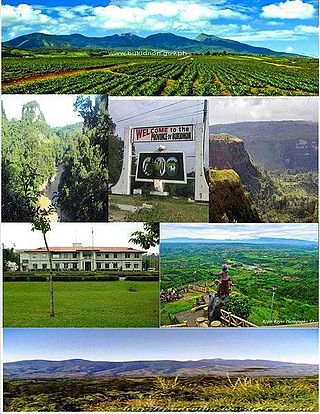
Bukidnon, officially the Province of Bukidnon, is a landlocked province in the Philippines located in the Northern Mindanao region. Its capital is the city of Malaybalay. The province borders, clockwise from the north, Misamis Oriental, Agusan del Sur, Davao del Norte, Cotabato, Lanao del Sur, and Lanao del Norte. According to the 2020 census, the province is inhabited by 1,541,308 residents. The province is composed of 2 component cities and 20 municipalities. It is the third largest province in the country in terms of total area of jurisdiction behind Palawan and Isabela respectively.

Davao del Sur, officially the Province of Davao del Sur, is a province in the Philippines located in the Davao Region in Mindanao. Its capital is Digos. Davao City is the largest city in terms of area and population within the province's jurisdiction, yet it is administratively independent from the province; as such, Davao City is only grouped for geographical and statistical purposes.
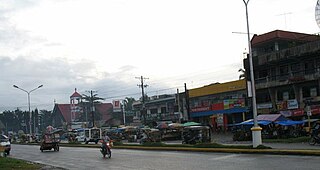
Agusan del Sur, officially the Province of Agusan del Sur, is a province in Caraga region, Mindanao, Philippines. Its capital is the municipality of Prosperidad. It is bordered on the northwest by Agusan del Norte and Misamis Oriental; east by Surigao del Sur; southeast by Davao Oriental; mid-south by Davao de Oro; southwest by Davao del Norte and, mid-west by Bukidnon. It is the fourth largest province in the country in terms of area, with the size of 3,856 sq miles.
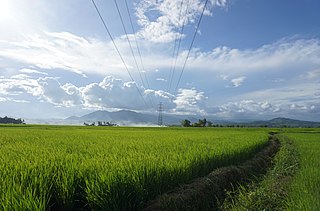
Maramag, officially the Municipality of Maramag, is a 1st class municipality in the province of Bukidnon, Philippines. According to the 2020 census, it has a population of 108,293 people.

San Fernando, officially the Municipality of San Fernando, is a 1st class municipality in the province of Bukidnon, Philippines. According to the 2020 census, it has a population of 63,045 people.
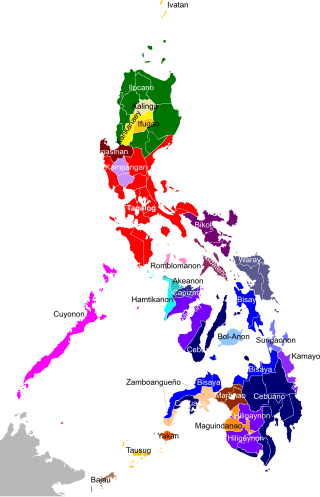
The Philippines is inhabited by more than 182 ethnolinguistic groups, many of which are classified as "Indigenous Peoples" under the country's Indigenous Peoples' Rights Act of 1997. Traditionally-Muslim peoples from the southernmost island group of Mindanao are usually categorized together as Moro peoples, whether they are classified as Indigenous peoples or not. About 142 are classified as non-Muslim Indigenous people groups, and about 19 ethnolinguistic groups are classified as neither Indigenous nor Moro. Various migrant groups have also had a significant presence throughout the country's history.

The Lumad are a group of Austronesian indigenous peoples in the southern Philippines. It is a Cebuano term meaning "native" or "indigenous". The term is short for Katawhang Lumad, the autonym officially adopted by the delegates of the Lumad Mindanao Peoples Federation (LMPF) founding assembly on 26 June 1986 at the Guadalupe Formation Center, Balindog, Kidapawan, Cotabato, Philippines. Usage of the term was accepted in Philippine jurisprudence when President Corazon Aquino signed into law Republic Act 6734, where the word was used in Art. XIII sec. 8(2) to distinguish Lumad ethnic communities from the islands of Mindanao.

The Sultanate of Maguindanao was a sultanate that ruled parts of the island of Mindanao, in the southern Philippines, especially in modern-day Maguindanao provinces, Soccsksargen, Zamboanga Peninsula and Davao Region. Its known historical influence stretches from the peninsula of Zamboanga to bay of Sarangani until Davao Gulf. During the era of European colonization, the Sultanate maintained friendly relations with British and Dutch traders.
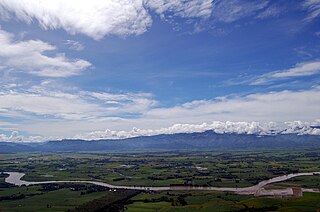
The Pulangi River ;, also spelled Pulangui, is one of the major tributaries of the Rio Grande de Mindanao, an extensive river system in Mindanao, Philippines. With a length of 320 kilometres (199 mi), it is the longest river in Bukidnon and the 5th longest river in the Philippines. It traverses through majority of the cities and municipalities of Bukidnon from its source in Barangay Kalabugao, Impasugong, Bukidnon.

The Manobo languages are a group of languages spoken in the Philippines. Their speakers are primarily located around Northern Mindanao, Central Mindanao and Caraga regions where they are natively spoken. Some outlying groups make Manobo geographically discontiguous as other speakers can be located as far as the southern peninsula of Davao Oriental, most of Davao Occidental and coastal areas of Sultan Kudarat. The Kagayanen speakers are the most extremely remote and can be found in certain portions of Palawan.
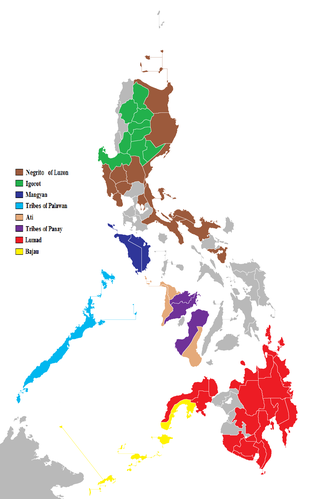
The Indigenous peoples of the Philippines are ethnolinguistic groups or subgroups that maintain partial isolation or independence throughout the colonial era, and have retained much of their traditional pre-colonial culture and practices.
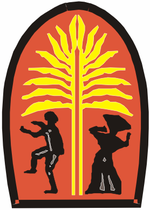
Kaamulan Festival is an ethnic cultural festival held annually in Malaybalay City, Bukidnon in the Philippines from the second half of February to March 10, the anniversary date of the foundation of Bukidnon as a province in 1917. It is held to celebrate the culture and tradition of the seven ethnic tribal groups—Bukidnon, Higaonon, Talaandig, Manobo, Matigsalug, Tigwahanon and Umayamnon—that originally inhabit the province. It is the only authentic ethnic festival in the Philippines.
The Suludnon, also known as the Panay-Bukidnon, Pan-ayanon, or Tumandok, are a culturally indigenous Visayan group of people who reside in the Capiz-Lambunao mountainous area and the Antique-Iloilo mountain area of Panay in the Visayan islands of the Philippines. They are one of the two only culturally indigenous group of Visayan language-speakers in the Western Visayas, along with the, Halawodnon of Lambunao and Calinog, Iloilo and Iraynon-Bukidnon of Antique. Also, they are part of the wider Visayan ethnolinguistic group, who constitute the largest Filipino ethnolinguistic group.
Agusan is a Manobo language of northeastern Mindanao in the Philippines.
Matigsalug is a Manobo language of Mindanao in the Philippines. It belongs to the Austronesian language family.
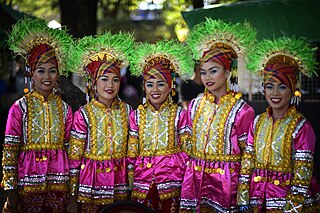
The Teduray, also called Tiruray or Tirurai, are a Filipino ethnic group. They speak the Tiruray language. Their name may have come from words tew, meaning people, and duray, referring to a small bamboo hook and a line used for fishing.

Pantaron Mountain Range, also called the Central Cordillera of Mindanao, Philippines is a mountain range straddling across the provinces of Misamis Oriental, Bukidnon, Agusan del Norte, Agusan del Sur, Davao del Norte and Davao del Sur. The range contains one of the last remaining old growth or primary forest blocks in Mindanao. Major rivers on the island also have their headwaters on the mountain range, including Mindanao River, Pulangi River, Davao River, Tagoloan River and major tributaries of Agusan River.
The Salug River is a river in Bukidnon, Philippines. Its drainage area is located in the southern sections of San Fernando. It acts as an aquifer for said municipality. Salug is a tributary of the Davao River, an extensive river system of within the Davao river basin.
Bai Bibyaon Ligkayan Bigkay was a Filipino Lumad leader and environmentalist. She was the first and only female chieftain in the history of the Manobo people and has been described as "Mother of the Lumads". She was an advocate of indigenous peoples’ rights and had been a defender of Manobo ancestral lands and the Pantaron Mountain Range from 1994.















